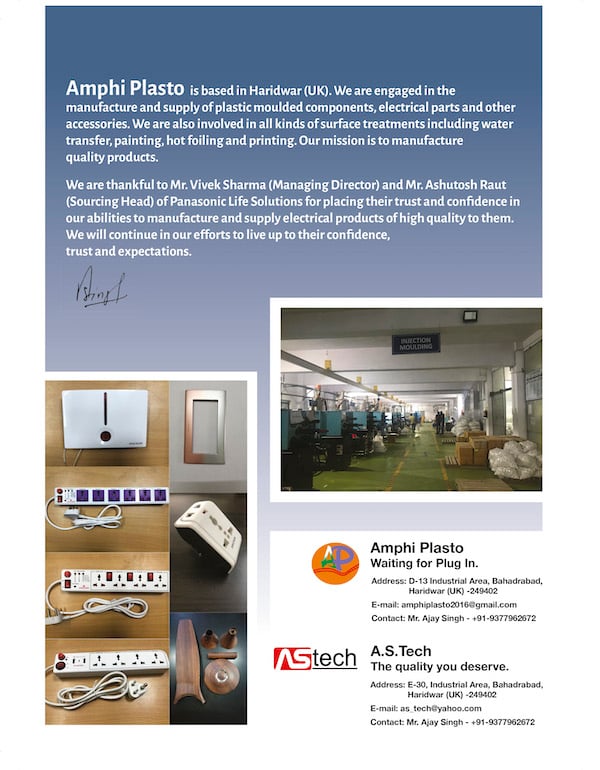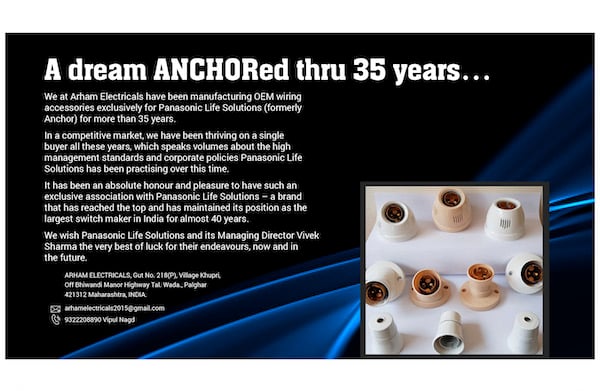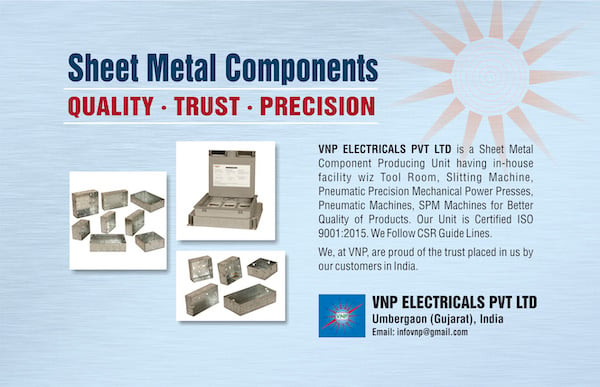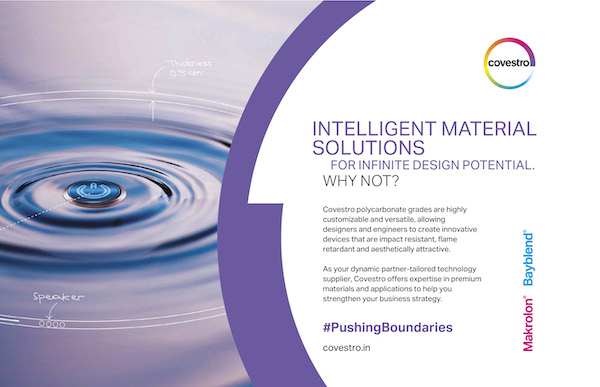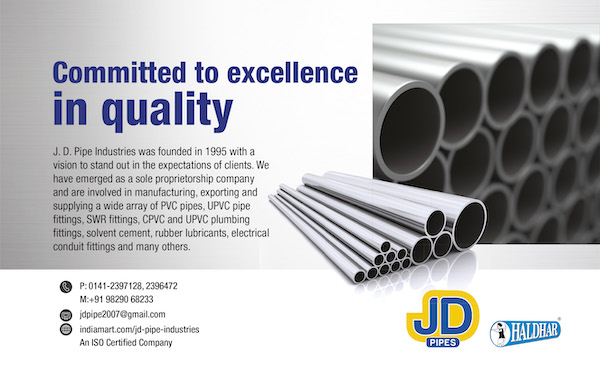Vivek Sharma’s cause isn’t purely personal vocation; it’s altruism. “I want people to know we are caring citizens of our country,” he insists.
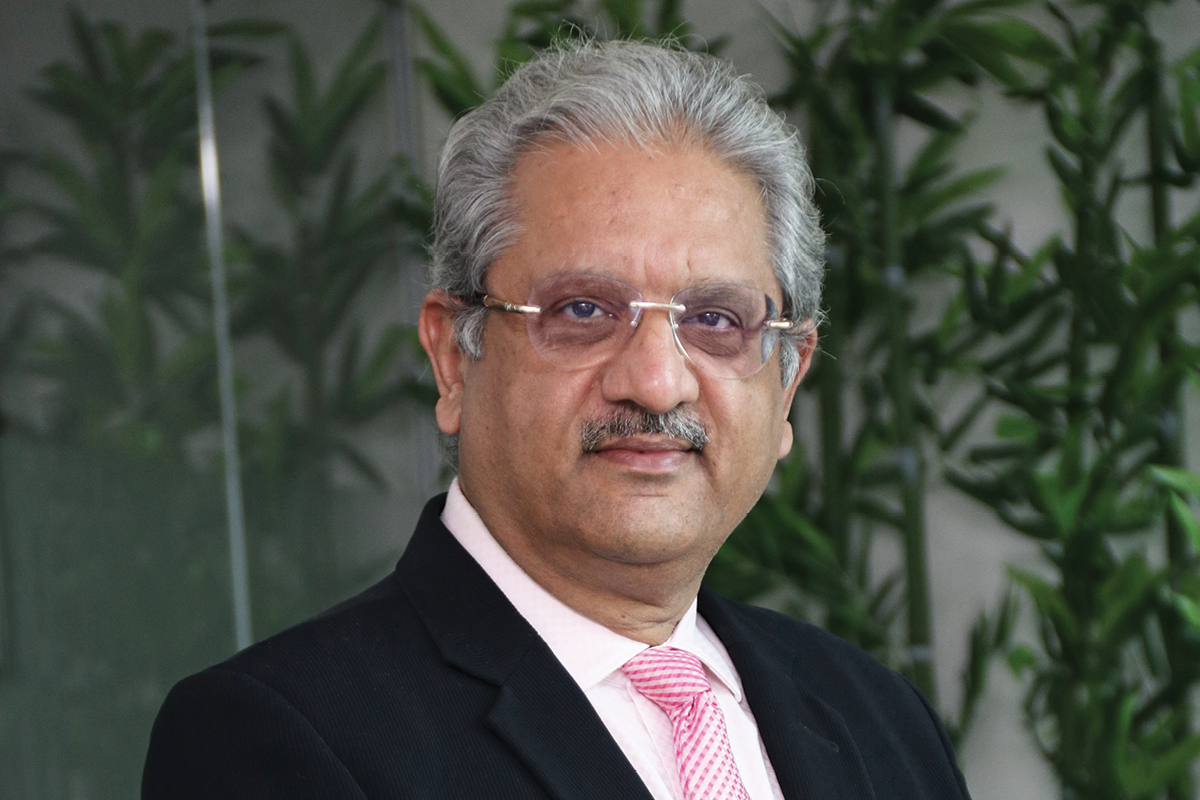
“We have a platform, and we use it to ask ourselves, ‘what can we do for others?’ We don’t live for ourselves alone, but for our fellow citizens, our customers and our country. The results give us happiness, and happiness is something we need to spread.”
“I live a spartan lifestyle,” he adds. “I don’t even have a car. I use Uber or Ola to get to work each day. I enjoy the simple life.”
All his professional life, Vivek has been in the lighting and durables business. Immediately after finishing his MBA in Marketing, he started his career at Philips India. Today, he is the first Indian to be Managing Director of Panasonic Life Solutions.
Formerly called Anchor Electricals, the company was formed in 1963 and was one of the largest domestic manufacturers of electrical construction materials.
Anchor and Panasonic’s synergy in 2007 resulted in an innovative range of electrical, lighting and ventilation products. Post-acquisition, the brand was named Anchor by Panasonic and in 2019 it changed to Panasonic Life Solutions.
Social media brought Vivek to Panasonic when a recruiter found his profile on LinkedIn. “They asked if I would be interested in the position, and I did some thinking,” he recalls.
“I thought about Panasonic as the Japanese organisation, known for trust and quality. It’s a global leader, but there is still much potential for it in the marketplace. I was intrigued. I could contribute my expertise, so I accepted the offer.”
Transformation
In his new role, Vivek first wanted to enhance the way Anchor and Panasonic connects with its consumers in the electrical space and, after a few months of joining, he felt the company was on the cusp of a substantial transformation.
He spearheaded a review of its channels, human resources, products and response to competition. “We had quality, customer-friendly products but we weren’t stretching ourselves,” he says.
“The way we could connect with our consumers could be improved, and though we already had an excellent team, it could be made stronger. I called it a cultural reorientation. I wanted to review our strategy and aim for a performance-driven culture.”
The four cornerstones of his strategy are performance-driven culture, building up human resources, products and promotion. “Though Panasonic acquired Anchor almost a decade ago, we hadn’t assimilated their way of doing things,” he says.
“For example, we were working seven days a week when the world had shifted to a five-day week. It was not a good work–life balance.”
Employee-First Culture
“While ‘consumer is the king’, we treat ‘employee as emperor’ in our organisation,” Vivek explains. “The logic is that once the employee is engaged, happy and treated well, he would definitely treat his customers better and achieve the goals of the organisation.”
“We made solid changes,” he continues. “Changes that may not seem big to other businesses, but for a traditional, family-owned business they were drastic. We implemented quarterly appraisals and changed the structure of the organisation. We divided the company into verticals, making it much more effective. The changes have opened up more opportunities.”
To expand and strengthen the brand, Panasonic Life Solutions has recruited 80 people to focus on B2B and B2G to help reach its goal of becoming a billion-dollar company by 2021-22 and 550 people to work in its teams dedicated to Lighting, IAQ and Power.
The majority of the company’s manufacturing facilities were located in North and West India, so it set up a new manufacturing plant in South India in an area called Sri City, Andhra Pradesh to “boost the brand at this developing industrial area and bring in employment and market expansion opportunities for locals”.
The company also took a different approach to sales. “The verticals helped us bring three things into focus: the way consumers buy, consume, and seek information about the company and its products,” he explains.
“The sales team has specialised training, to serve customers better with a faster response time. We also developed a marketing department. This was an essential piece missing from the company, so the team started on the necessary duty of connecting with our consumers. We’ve established a 360-degree multimedia campaign to boost the brand and product line and are using technology through multiple mobile apps.”
The company’s creative mandate is spearheaded by Leo Burnett, whereas IPG Mediabrands is responsible for media planning and buying.
“In 2018, we wanted to move a notch higher and be part of the ever-expanding communication channels,” Vivek says.
“We got MSL on board to handle our PR mandate with very strategic corporate and consumer messaging in mind. Being real time in today’s social media world is so important and most brands are targeting their audience through creative options on digital media. For the same, we are working closely with Fulcro.”
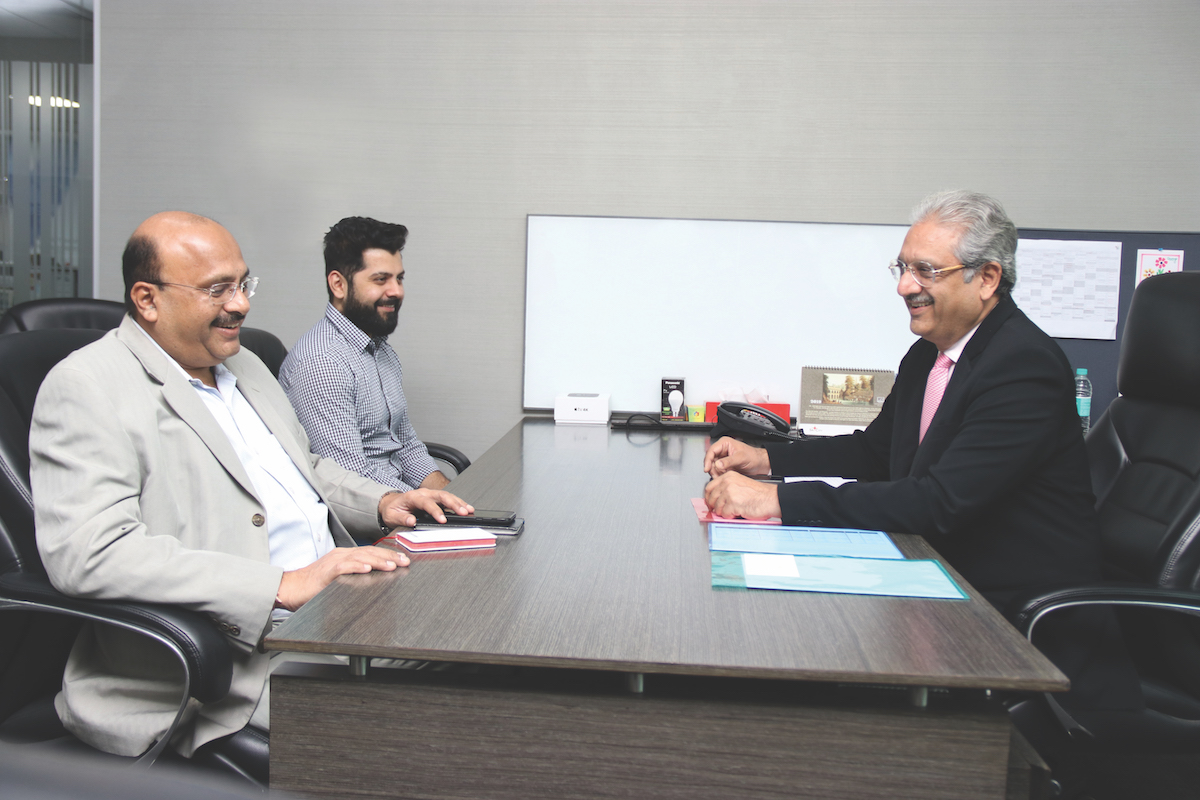
Overcoming obstacles
While pondering the transformation process, Vivek notes that any business with ambitious plans will face difficulties, both external and internal.
The first external challenge is a battle for talent. “As we grow, we need a team that grows with us,” he says.
“Many of our team members will, but we also need to recruit from outside. We have two things going for us: the Panasonic brand draws talent in, and our story of growth is spreading and piquing interest in the company.”
The second challenge is the company’s competition. “Many of our competitors are resorting to unhealthy discounting,” he says.
“There is a price war and a price devaluation, which puts huge stress on trying to increase our market share.” The third external challenge is the cost of media. The investment is huge. If we want to build a stronger brand, it will cost a significant amount.”
The company also has internal obstacles. Vivek says training and development and new technology are relatively new hurdles they must jump.
“As the company grows the team grows, and they aspire to greater things, we want to prioritise training, but it is a big investment and can be difficult to set up.”
“It is also tough to steer around new solar technology, which some of our product categories involve. I compare solar power today to what IT was 15 years ago. Every year the cost reduces by around 20%, so the price of solar power has exponentially decreased while capacity is increasing.”
“The government is promoting solar power but it is making difficult for us to import. In 2018, in a bid to have solar products made in India, they started a new safeguard import duty.”
On the other hand, the government has made it obligatory now for manufacturers or sellers of solar panels to obtain BIS (Business of Indian Standard) certification in order to ensure a better quality of solar panels.
“So far, we are the only company with BIS certification for manufacturing solar panels. This has 20% higher efficiency compared to China solar panels which are usually used by many manufacturers in our country.”
The Indian government has imposed a safeguard duty of 25% on solar imports from China and Malaysia for the next two years. Vivek calls this regulation a “spanner in our works” because Panasonic has a factory in Malaysia.
“We don’t yet have a factory here in India, which means we suddenly find the cost of our solar products has gone through the roof, and we are no longer at a competitive level. As professionals, we should have some consistency. Spikes in cost and other surprises don’t bode well for a business. But these challenges drive us. We are doing our best to enjoy the journey.”
“Challenges exist, but that’s what drives us. We are doing our best to enjoy the journey.”
Competitive edge and partnerships
Vivek believes that its knowledge of the electrical construction material industry helps Panasonic to stand out from the competition.
“We have made substantial investments around channelling information, through channel servicing. I would say we have the best industry knowledge in electrical construction material. This information links to the company’s range of products. If a new project starts, it involves PVC pipes, cables, switches, lighting; our entire range. Next, is the application itself,” he continues.
“We have an advantage in our Japanese pedigree. We have been fortunate enough to receive a higher level of trust and confidence from customers through Panasonic and Anchor. They recognise these two strong brands and put their faith in us.”
Panasonic also has a strong workforce, which places it ahead of many competitors in the region. The team is made up of approximately 1,200 employees and 7,500 manufacturing professionals, many of whom have worked for a long and consistent period.
“I believe this differentiates us from other companies and will help us stay strong through highs and lows,” he says.
Manufacturing is a core activity for Panasonic. Vivek wants to continue growing this area of the business because it assists in quality and keeps costs low. “Manufacturing influences the quality we deliver,” he says.
“It also helps us keep our costs down, which is something we want to offer. We know the customer expects it. It also allows us to provide a consistent supply of goods across the country. There are not many organisations investing in manufacturing like we are. We are employing thousands of people in this area of our business; it is one of our principal departments.”
Cultivating lasting partnerships is vital to Vivek. He says the company hasn’t lost one vendor in the past five years. “There is stability and continuity in our supply chain,” he notes.
“Our logic is that our vendors must be profitable, fully engaged in our business, and share our values and objectives for us
to have a successful story.”
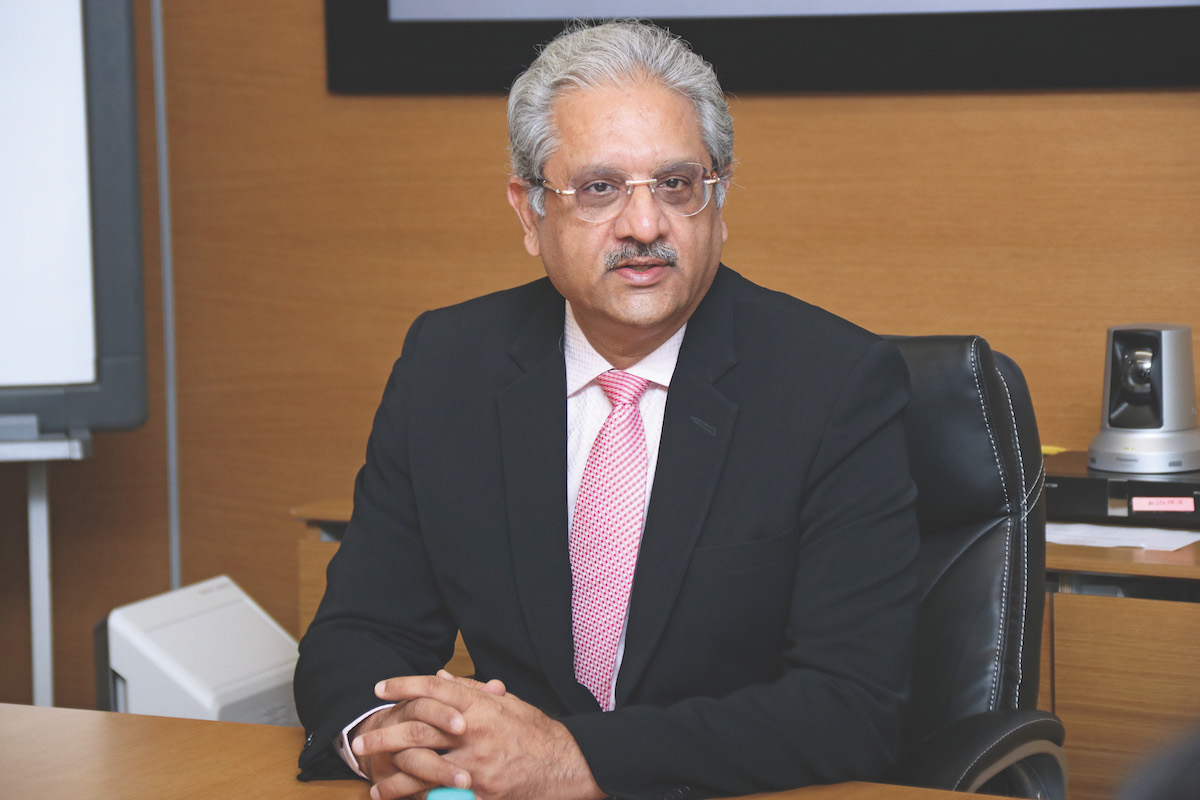
Similarly, if the company’s channel partners aren’t profitable, or if they don’t receive unique products from Panasonic, that will end their relationship.
“If they don’t stand on their own feet, we can’t be an independent, dynamic organisation either,” he says. “We review these relationships regularly and decide if we need to make changes.”
Panasonic has developed its supplier relationship management. First, the business created a supply management function including internal logistics.
“There used to be a product planning department,” Vivek says. “Now we have a supply chain that gives us a one-stop solution.”
Next, it decided to include all vendors in its platform. It shares its Japanese technology and benefits with its vendors, including productivity improvement techniques. “We have started a vendor rating program,” he explains. “This program gives the vendor an opportunity to increase its position across every quarter.”
Third, because some vendors are small companies, either entrepreneurs or start-ups, arranging funds can be a challenge. Panasonic decided to create a financial scheme with three national banks.
Fourth, Panasonic has set up a quality team to support the training of vendors and suppliers for incoming quality inspection and outgoing quality dispatches.
“Instead of being inward-oriented, the company has now become outwardly mobile,” he says. “This should help vendors receive fewer rejections, fewer losses, and higher quality products.”
Panasonic partners with local and global suppliers. Panasonic Malaysia is a chief supplier and it uses a Chinese supplier for products such as solar and lighting.
“We are an emerging brand in lighting,” Vivek explains. “Some leading lighting vendors from other countries are working with us, and lighting is an area we plan to grow exponentially in, in the coming years.”
As the number of vendors continues to grow, Panasonic aims to expand its factories into different regions of India. “Most of our factories and units are in the north and west,” he says. “We are now starting to expand and are already building a factory in a new region of India.”
“We are now starting to expand and are already building a 14-hectare factory in a new region of India.”
Vivek is certain his supplier relationships are a win–win. “Panasonic and its vendors are one solid team,” he states.
“Our vendors seem excited to partner with a company that is backed by Panasonic. There are many benefits for us too. Our vendor–supplier relationships help the company run day-to-day, while our sales partners have assisted in increasing sales and revenue growth. Most importantly, they’ve helped increase our visibility and ability to respond to customer expectations.”
Panasonic is closely connected to customers through communication with its channel partners. It can provide faster services, suited to their expectations and needs. “At the end of the day, Panasonic is a worldwide US$85 billion enterprise,” he says.
“With an organisation of that size and complexity, you sometimes tend to lose speed. We are aiming to avoid this. Because our partners are a smaller size, building these relationships as a large organisation means we can act as a smaller company. They are nimbler and more responsive to customers. This is a major advantage.”
Giving back
As an organisation, Panasonic values integrity, honesty, teamwork, customer focus, accountability, innovation, adaptability and corporate social responsibility.
Its community outreach is immeasurable, with projects including village adoption, solar power provision, water taps, emergency aid, and hospitals.
“We are located in Thane, an area around many indigenous tribes,” Vivek says. “A number of children in these tribes tend to lose their hearing due to ear infections. The tribespeople aren’t educated on the potential dangers of infection, so they don’t take care of the problem and it ends up progressing.”
He explains that when these children lose their hearing, it leads to the loss of many other functions, including the ability to speak.
“To help combat the problem we have partnered with hospitals in Mumbai to offer free hearing aids,” he says. “We have also set up a hostel and schools in the area. We educate the children and families, and allow them to stay in the hostel before going out into the world.”
Another initiative is a school to provide education to children on manufacturing practices. “Many children in the Haridwar area of our flagship factory are working on the streets,” he says.
“We set up this school to give them training, and many of them find manufacturing jobs in that area, not only at our factory but in other companies’ factories as well.”
Panasonic focuses on helping people of all ages, with its latest hospital project for elderly people with cataracts. “We are doing this in our home district,” Vivek explains.
“We help them to predict early stages of cataracts, give them free lenses and spectacles, and help them maintain healthy eyesight.”
Panasonic also provides emergency aid when possible. The Kerala floods of 2018 displaced nearly one million people, and more than 400 were killed.
Panasonic’s customer care and research teams deployed a crew of 150 people to help with the damage, particularly electricity and power failures.
“We received a WhatsApp message that prompted our customer care team to send a group of engineers to Kerala,” he recalls.
“People were saying they needed electricity. They told us their appliances weren’t working, or their lighting wasn’t on. We launched a campaign called Care for Kerala. We gave free services and replaced switches or revived lighting connections free of cost. We reached out to those who were in need.”
Future-focused
Vivek uses hindsight to determine the future. Following the acquisition 12 years ago, in the first decade sales grew at 13% CAGR and profit at 11% CAGR on average each year. Though this is steady growth, he believes they could do significantly better.
“We crafted a simple mission for ourselves,” he says, “Knowing we have the power of two brands, we could transform the organisation and treble our sales. In the last two years, the company has transformed in more ways than one and the results are there for all to see. In the first year after the first decade, sales grew 28% and profit by 100%. Last year, sales grew at 16% and profit at 32%. We want to continue in this direction and treble our turnover, quadruple our profits.”
Vivek believes Panasonic provides a unique space in the market. While it uses suppliers, it has eight manufacturing units of its own. “When I say suppliers, it could mean we buy either finished products or certain ancillary units,” he explains.
“We partner with more than 380 suppliers on the ancillary side and approximately 25 to 30 vendors from whom we buy finished goods. We follow the 80–20 rule. While we have not formalised any structure at our end, we have generally focused our attention on the top 20% of vendors who give us 80% of our service. We have established a new team to take over this department and, as we go forward, we will be taking it to the next level.”
The Indian government is pushing the country to become a manufacturing hub in the future, which places Panasonic at the centre of this objective. “Manufacturing is central to our growth and development, and we find the environment very supportive,” Vivek says.
Focus for the future
After being a market leader in switches, Panasonic Life Solutions is turning its focus to new segments such as LED lighting, solar panels and fans as its next engines of growth.
Proudly supported by:
